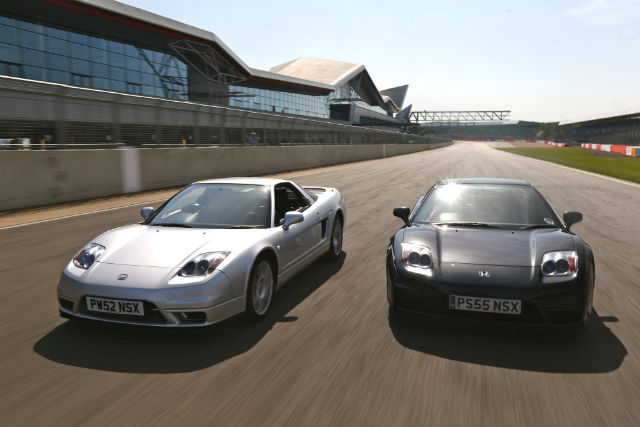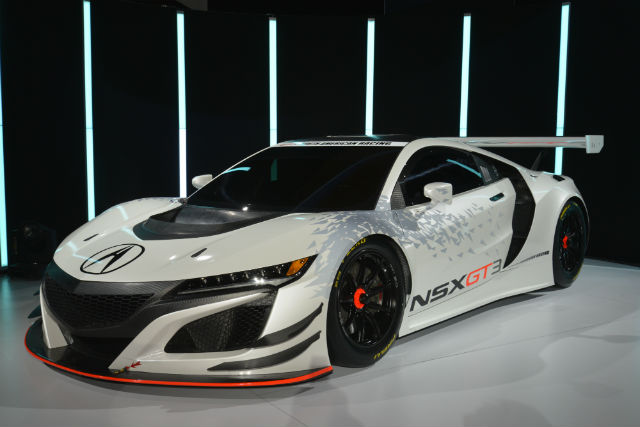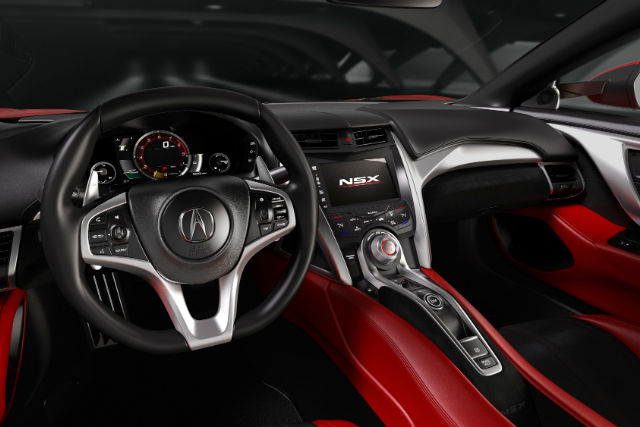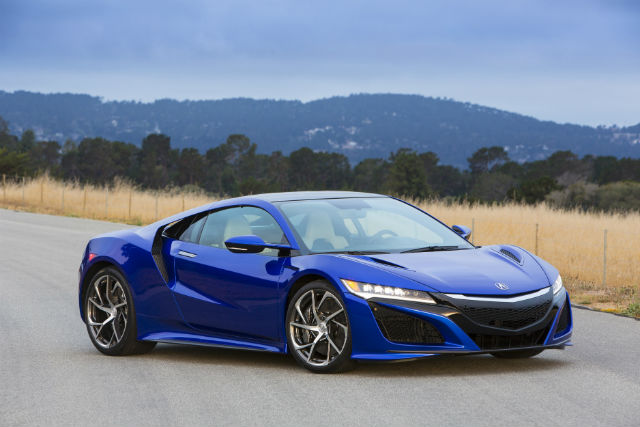Quite a while has passed since Honda released its last supercar: a whole quarter century in fact. The last time a true Honda exotic was around, Bryan Adams and Cher were topping the charts, the internet as we know it had only just been invented and the Soviet Union had just ceased to exist.
That car was of course the iconic NSX, which transformed Honda from a company best known for its motorcycles, power tools and budget cars into an engineering force that could genuinely rival Italy’s finest.
Developed with the help of Formula One ace Ayrton Senna and manufactured with what was at the time groundbreaking technology like an aluminium chassis and titanium engine valves, the NSX was Honda’s mid-engined masterpiece.
Dropping jaws with its svelte appearance, the car also boasted handling and performance as razor sharp as a katana, but with all the comfort and reliability you’d expect from a regular, everyday Honda.

Old vs the new
The original Honda NSX proved so popular that it stayed in production for a full 15 years, outlasting the vast majority of its supercar rivals. But by 2005 it was finally taken off the shelf, either unwilling or just unable to keep up with the insane horsepower war that characterised the noughties.
It’s clear, then, that Honda’s engineers had a lot to live up to when the eventual successor to the first-gen NSX would appear, and the problem with waiting 25 years to make a follow-up has meant that the NSX’s team has had 25 years’ worth of catching up to do.
The last time an NSX was available to buy, its rivals from the likes of Ferrari, McLaren and Porsche were all large displacement monsters with massive engines and an unquenchable thirst for petrol to go along with them. A quarter of a century later, and they’ve rapidly evolved into super smart, super sophisticated hybrids that match brutal potency with complicated drivetrains and a more fuel efficient ethos.
As a result, Honda has had to get smart too. While the first NSX was powered by a 3.0-litre V6 VTEC engine that put out 270bhp, its follow up uses a 3.5-litre twin-turbocharged V6 combined with no less than three electric motors which send power to all four of the wheels.

The engine itself, mounted in the middle of the car like the original, is good for 500bhp, while the trio of motors ups maximum output to 573bhp. 0-62mph flashes by in 2.9 seconds, while top speed clocks in at 191mph.
As a result, it’s about on par with the LaFerrari and McLaren P1 give or take a couple of tenths of a second, and like its rivals it also comes tricked out with all sorts of computer systems to wring the best from its acceleration and cornering abilities.
Suddenly the all-aluminium chassis of the original, the first on a mass-produced car, seems almost Stone Age in comparison. The new NSX’s computers are so smart that they can actively juggle and adjust power and torque across the front wheels thousands of times a second under hard cornering to keep the car stable, all the while sending recuperated kinetic energy back to the battery to recharge it.
So far, so very different then. But other things remain the same, namely the NSX’s two-seater cabin, which aims to be every bit as comfortable and well fitted as that you’d find in any passenger car, albeit with that special touch you only get in a supercar.

For a start, there’s an interesting aluminium flourish across the dashboard which Honda says is a nod to sport bikes, along with motorsports-inspired touches like swathes of Alcantara and leather. All the same, the recognisable infotainment system and ergonomic approachability makes for a performance car that’s nowhere near as intimidating as one of Maranello’s button-plastered cockpits.
Unlike the LaFerrari and the P1, which simply use their hybrid powertrains to further boost their unfathomable power outputs, the NSX is more like the Porsche 918 in that it can drive in fully electric mode using the three electric motors.
Put the boot in, however, and those same motors will deliver an instant jet of torque to fling the car forward like a slingshot while the twin turbochargers spool up and propel the NSX all the way to redline at around 8,000rpm.
It’s this mix of brains and utter brutality that makes the NSX what it is, and yes while Porsche, Ferrari and McLaren beat it to the hybrid supercar punch by quite a measure, what’s most remarkable about the Honda is that it comes with hypercar-rivalling performance for a tiny fraction of the price.

The most important supercar in years?
Starting from £130,000, the NSX isn’t cheap by anybody’s standards, but compared to the LaFerrari which was priced in excess of £1 million it’s an absolute bargain. Even the least expensive of the holy trinity, the 918, cost £625,000 - nearly four and a half times the price of the average house in the UK.
But this is how automotive technology gets democratised, by starting off expensive in halo cars and slowly trickling. Remember when carbon fibre was exclusively used in Formula One and motorsports applications? Or how about the once revolutionary all-aluminium body construction pioneered by the NSX, which now appears in all manner of everyday vehicles?
The new Honda NSX, therefore, is the future of the performance car personified, a monument to modern engineering just as the original was in its time, and potentially the car to make the hybrid supercar an everyday entity.
Which isn’t to say that it’s in some way ordinary or not special. Arguably it’s the most special hybrid performance car yet, matching hypercar-rivalling power but with an air of refinement and restraint rather than all-out extroversion.
Faster than an i8, cheaper and less intimidating than a Ferrari and revolutionary in its own way, will the second generation Honda NSX be treated as kindly by history as the original? Maybe we’ll have to wait 25 years to find out, but we don’t see any reason why it wouldn’t.



